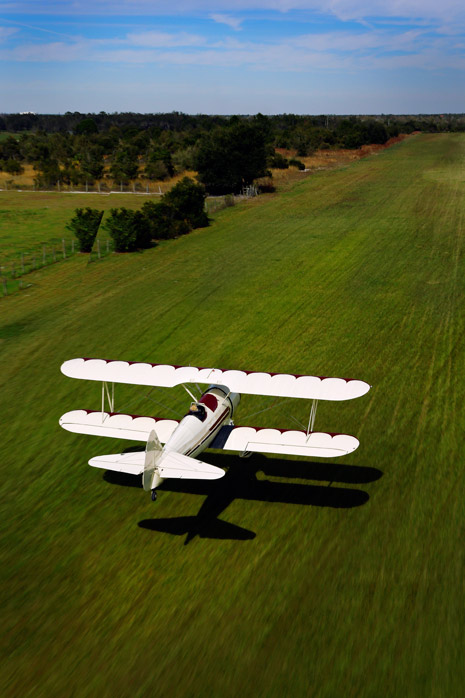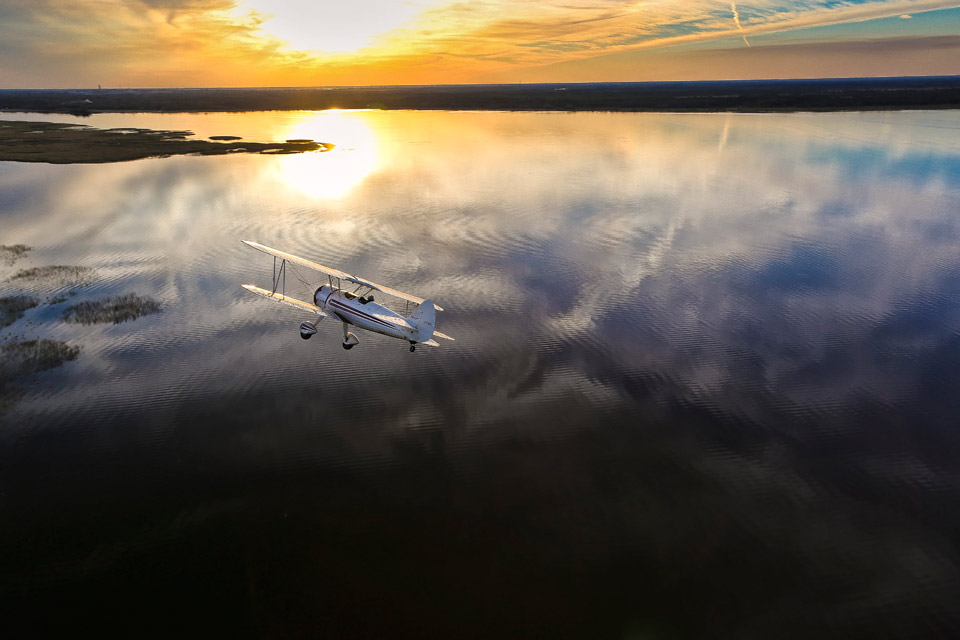
The shimmering Everglades landscape is unlike any other. Watery rivers of grass stretch for miles; groups of mossy cypress trees tower 100 feet above the black swamp water; and shallow lakes reflect the sun. The watery surfaces are a playground for a seemingly endless variety of water birds.
AOPA Photographer Chris Rose and I have an unmatched view of this unique area from an open-air, twin-engine AirCam equipped with amphibious floats. Our broad, unobstructed, and moving vantage point allows us to take in vast swaths of pancake-flat surface below, and get a sense of the problems and promise that this area holds.
We’re here on an aerial tour of the region organized by Gary Lickle of the Everglades Foundation. Lickle, a pilot who flies a Stearman and a Carbon Cub on floats, lives on the nearby southeast Florida coast. He points out some of the competing interests that are shaping the Everglades: agriculture, tourism, hunting, fishing, real estate development.
From the air, the vast natural areas are obvious, and so are the scars. Deep canals channel water to power plants and vegetable packing facilities, and away from sprawling, wind-whipped Lake Okeechobee. Smoke billows from massive sugar cane fields set alight. Housing subdivisions with manicured green lawns press to the edges of the water.
“Our mission is to get the water flowing south again to the Florida Bay, and to make it clean,” says Lickle, a financial manager who grew up in Delaware and has lived in Florida more than 30 years. “With the cooperation of local agriculture, we’re getting the water flowing again.”
Lickle, who also is a recreational hunter and fisherman, recruits volunteer pilots who use their general aviation aircraft to take scientists, politicians, and visitors on low-and-slow flights throughout the region. “It’s the best way to comprehend the scale of the place and its issues,” he says during a meeting at Belle Glade Airport, near the south end of Lake Okeechobee. “You can’t get that from Google Earth.”
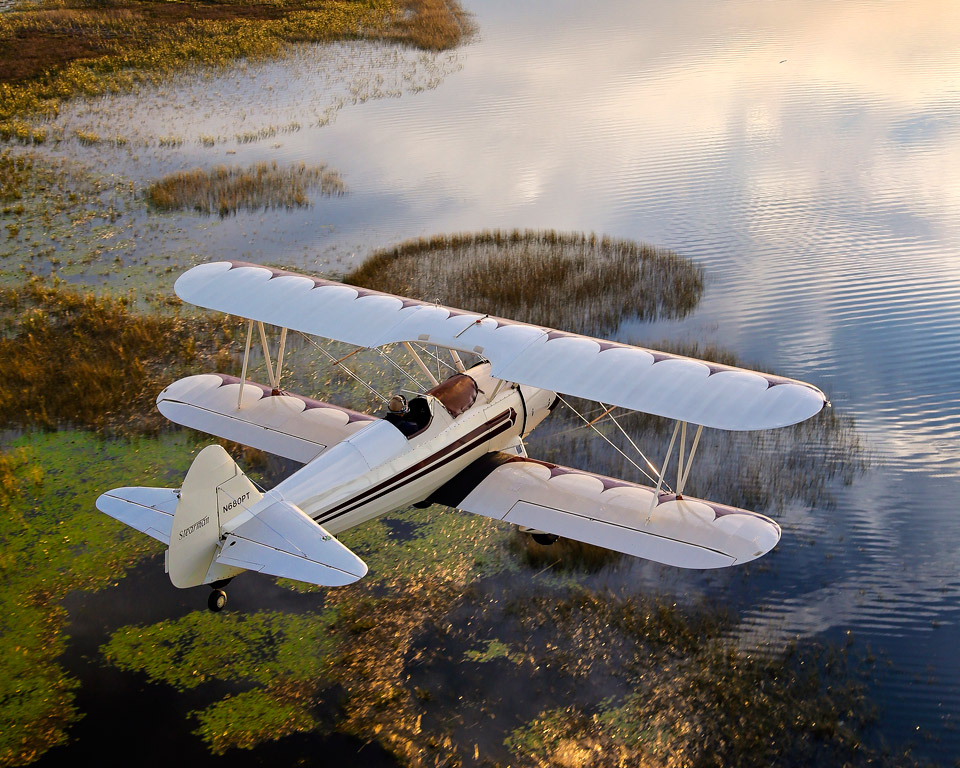
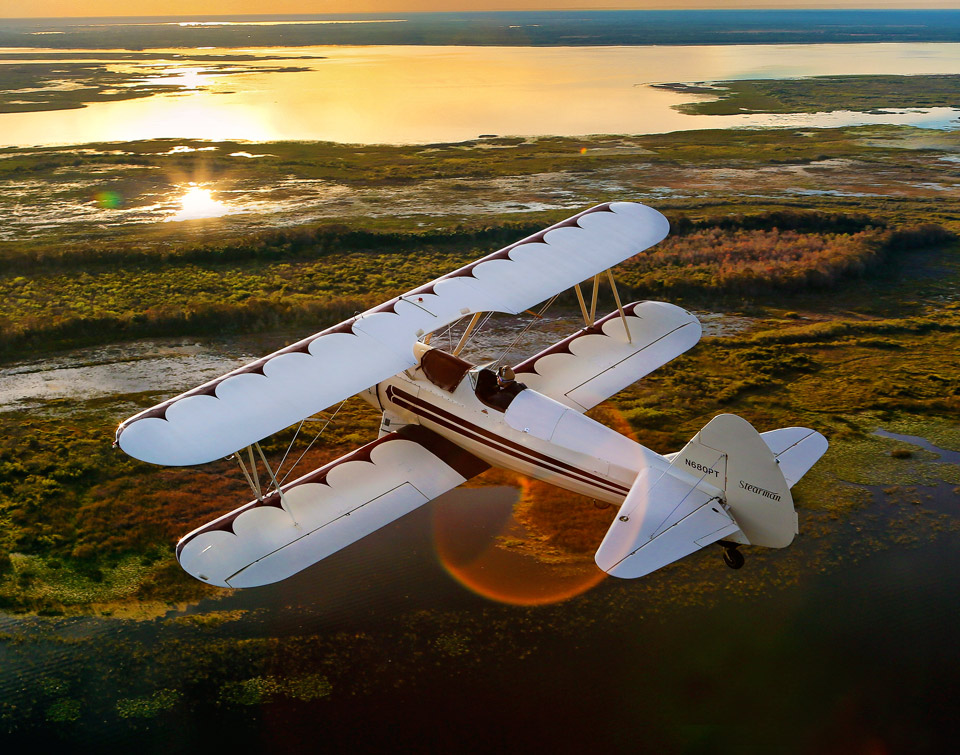
Photography by Chris Rose
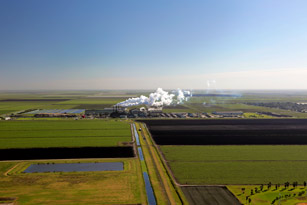 Lickle is supremely confident that answers are coming, but perhaps not from traditional sources. “The guys with the badges and the regulators aren’t going to solve this problem for us,” he said. “It’s too big and too complex and has too many interrelated parts.
Lickle is supremely confident that answers are coming, but perhaps not from traditional sources. “The guys with the badges and the regulators aren’t going to solve this problem for us,” he said. “It’s too big and too complex and has too many interrelated parts.
“The only way forward is changing people’s attitudes—and that can be done. We’ve seen it happen with seatbelt use, and cigarette smoking, and the same thing is happening here with environmental conservation,” Lickle said. “It’s taking place a little at a time through education, and it’s a slow process. But the benefits are huge, and they’re going to be tangible for our kids, and their kids.”AOPA
Email [email protected]

On an evening photo flight, we join Veteran’s Airlift Command Founder Walt Fricke and follow him and his Stearman Model 75 biplane on a meandering path over constantly changing watery backdrops. Fricke notes the presence of numerous alligators and, only half joking, says he expects to be retrieved quickly in the amphibious AirCam if forced to ditch in the swamp.
“I’m told there are more alligators in this lake than any other—and they all look hungry,” he quips. However, the Lycoming R-680 in his Stearman purrs without interruption.
All around Lake Okeechobee the Herbert Hoover Dike, built in 1929, divides the wet natural areas on the inside from the dry, settled places outside. Hunters, fishermen, and airboat operators giving wildlife tours ply the shallow waters inside the dike, and sugar cane and vegetable crops grow right up to its boundaries.
Record rainfall in 2013 inundated this area with disastrous effects. Instead of flowing south to the Florida Bay and being filtered and cleaned by the swamps as in times past, the rainwater swept away large amounts of phosphorous from nutrient-rich fields that had been heavily fertilized, then spilled east and west into the Atlantic and Gulf of Mexico. There, it caused large algae blooms, fish kills, and reef damage.
Now, the Everglades Foundation and its partners plan to offer an “X-prize” of sorts for discovering a way to convert phosphorous to harmless material—and Lickle says the result could be profound.
“If you can solve the problem in this area, you’ll solve it for environmentally sensitive areas all over the world,” he said. “If we can clean and restore this estuary, that same model can be exported.”
